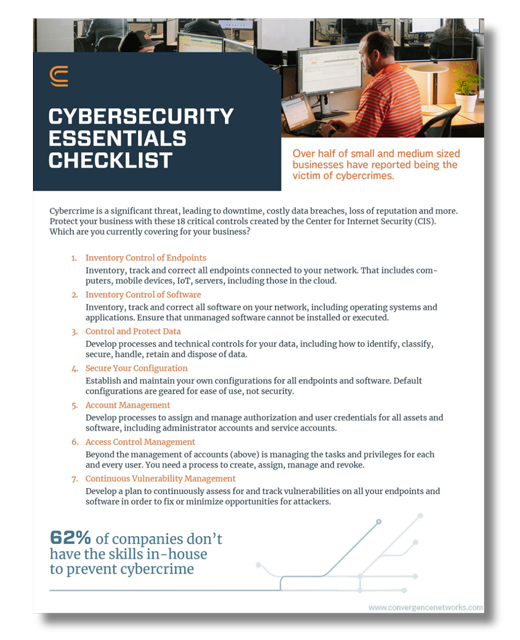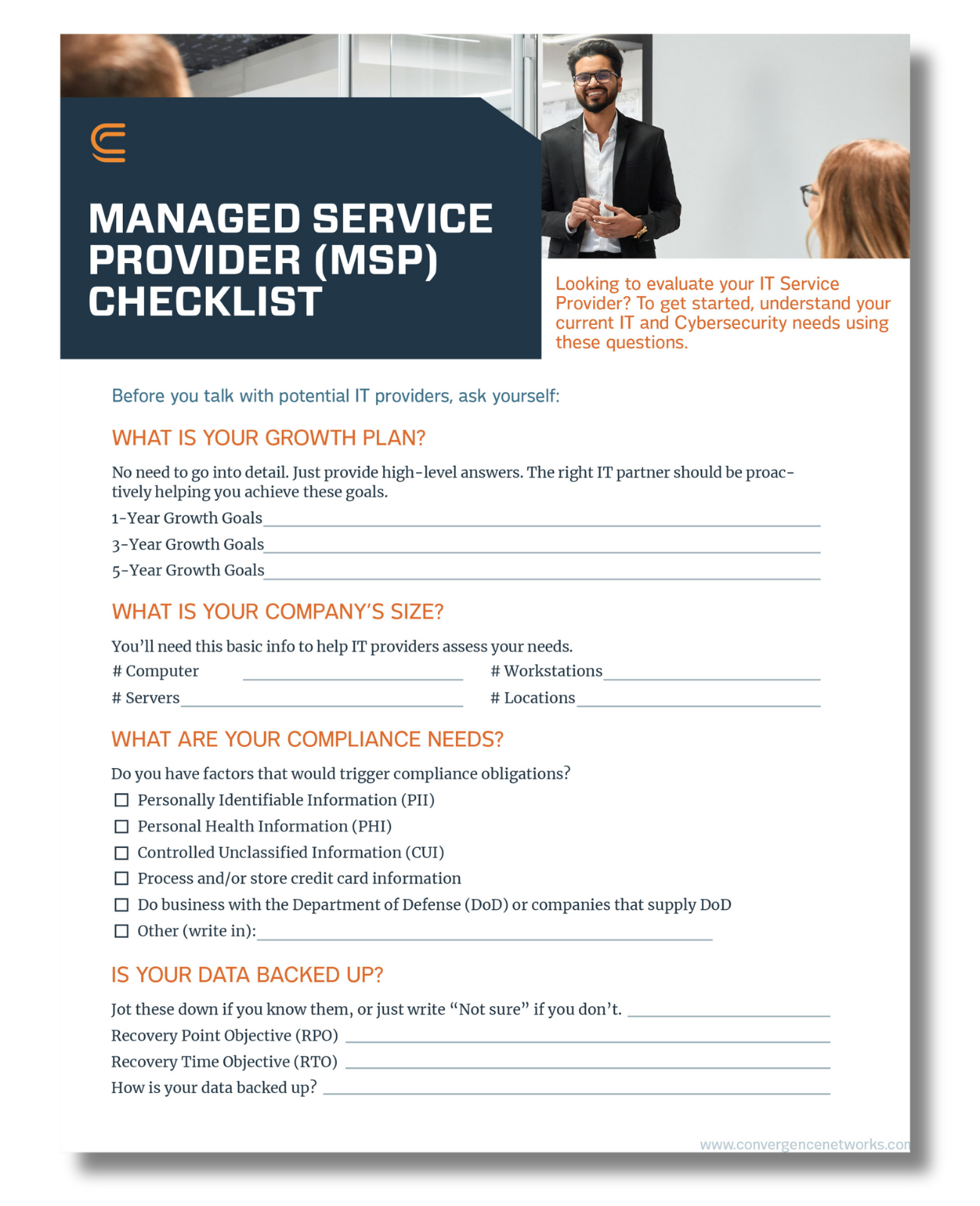Cybercrime is an epidemic of huge proportions. 2020 saw an increase of 600 percent in cybercrime and 2021 estimates show ransomware attacks cost companies more than $6 trillion! Along with this came a rise in cyber security testing services and promotions. But do you really need all those services? Which type of testing should you get first? We’ll cover the types and which are most important for your business in this post.
First, remember that when it comes to cyber security, the goal is to make your business more secure without impacting your ability to do business and grow. Yes, the industry giants are being targeted, but so are small businesses — because cybercriminals think they’re easy targets. Too often they are right. But shoring up your security doesn’t have to break the bank or drain productivity. Start with a cyber security audit.
Cyber Security Audit
This cyber security test is a comprehensive examination of every strategy that you currently have in place. Its goals are to:
- Find any gaps in your system and fill in those gaps.
- Produce an in-depth report for you to use to show your readiness to defend any current or future cyber threats.
Usually, the audit has three phases: assessment, assignment and audit.
- Assessment. All your company’s data equipment will be scrutinized: computers, servers, software, databases. The review will determine how you assign access rights currently in place to defend against attacks. Some security gaps are likely to show up that need to be mitigated.
- Assignment. Your internal team or a managed service provider, such as Convergence Networks, should be assigned to find solutions to whatever issues are found.
- Audit. Then it’s time for the actual audit to take place as a final check of your new system before releasing it back into the company. The audit should ensure that all the installations, upgrades and patches operate as expected.
Types of Cyber Security Assessments
Cyber security assessment or testing are general terms — more of a category of services than a specific test. To make the right decision for your business, use more specific testing terms when discussing your options with IT providers.
- Gap or IT assessment. A gap or IT assessment is a thorough review of a company’s technology systems and environment. Its goal is to understand how the current level of technology helps or hinders the business by providing insight for IT experts to make recommendations on how to use technology to meet business goals and objectives.
- Vulnerability assessment/scan. Potential internal and external weaknesses in your network are the target of this audit. It’s an automated audit which is done quickly, and will produce actionable reports for reasonable costs because of the automation. The frequency of the scan depends on your business and your risk tolerance. If, for example, your business accepts credit cards, all external IPs and domains exposed in the CDE (card holder data) are required to be scanned at least quarterly by a PCI (payment card industry) ASV (approved scanning vendor).
- Penetration test (a.k.a. pen test, red teaming, ethical hacking).The goal of this test is to discover and eliminate any security vulnerabilities. It is essentially an authorized and simulated cyber attack on your business by “white hat” cybersecurity experts. For most small businesses, this test is rarely needed. Internal and external vulnerability scans are the better choice. Once a vulnerability scan is completed and any issues resolved, you and your IT partner can decide if a pen test is warranted.
- Network audits. Network audits address both security and performance and should be done regularly, primarily because you need to know what you have before you can ensure that it is secure. These audits can find unauthorized hardware and software added to the network that might lead to security, performance, licensing issues and provide visibility into performance issues. These regular audits allow setting adjustments, function restoration and component replacement as needed to improve productivity and security.
- Compliance audits. This type of cyber security testing checks that all the rules, regulations and laws specific to your business are being followed. PCI compliance, which applies to any business that accepts credit card payments, would be included in this, as well as many other types of compliance that pertain to your type of businesses. This includes environmental, employment, antitrust, advertising, marketing, fair labor standards, medical and more.
Most companies perform these periodically themselves throughout the year to determine their overall risks to compliance and security and to make sure everyone is following guidelines. Usually it’s done by a staff member or a vendor partner.
External compliance audits on the other hand are formalized and carried out by an independent third party that measures if an organization is complying with state, federal or corporate regulations, rules and standards. Each follows a specific format that is determined based on the compliance regulation being assessed (e.g., taxes, HIPPA, OSHA, EEOC).
Tips for a Successful Cyber Security Audit
1. Check the expiration date
Realize that cyber attacks are constantly evolving so there is not a one-time, fix-it-all solution. There is an “end date” to all solutions as there is always a new wave of cyber threats emerging. In other words, check your existing cyber security solutions and make sure that they are up to date whenever the manufacturer sends out an update. Also make sure the manufacturer still supports the software you’re using.
2. Identify your threats
Are the passwords weak? Are your employees aware and diligent about phishing attacks and malware? Are only the right people accessing sensitive data? Are they leaking data unknowingly?
One way to avoid such leaks is to not allow employees to connect their own devices to your company network. If they do, you lose all control over the security of those devices and the information they can access.
Bottom line: Understand the potential threats BEFORE you focus on solutions.
3. Know the best ways to educate employees
It is crucial that your employees know how to respond to all threats. After all, what good is it to identify these threats and find solutions to them if your employees don’t know how to use them when an emergency arises?
So, teach, educate, inform all your employees how to handle these possible breaches and threats. Create a plan that includes:
- The types of threats you’ve identified in the audit and how to spot them.
- A resource that an employee can contact if they find a threat.
- How long it will take to fix the threat.
- Any rules about external devices or accessing data stored on secure servers.
Employees who have a solid knowledge about responding to threats create a very strong defense against future attacks.
Audits Improve Security
There is no question that audits are your proactive tool against cyberthreats. They give you a chance to evaluate your security, identify issues and stay up to date on the latest threats. Without them, businesses risk falling victim to ever-evolving attacks.
Security solutions, however, are not one-and-done. Audits improve cyber security because they assure regular updating and re-examination of any issues or threats.
If you’re not sure about whether your internal staff has the wherewithal to conduct a cyber security audit, contact us or for a free no-obligation consult. We can discuss your existing system and we might be able to help you improve on it.














